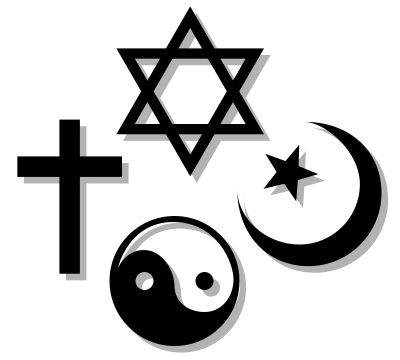computers and religion
Publié le 22/02/2012
Extrait du document

The development of
electronic computers in the second half of the 20th
century changed many aspects of life, including
religion. In particular, changes in religion have
been brought about by the development of the personal
computer in the 1980s and of the Internet in
the 1990s. These effects are still taking place, and
people are still trying to determine exactly what
they have been.
Computers and the Internet have benefi ted
religious organizations in several ways. They have
even benefi ted some ultraconservative communities
that may otherwise appear old-fashioned, such
as the Lubavitch community of Hasidic Judaism.
Computers allow organizations, including
religious organizations, to keep more accurate
records and analyze them more quickly. They can
identify trends more easily—for example, when
they are losing or gaining members—so that they
can respond to those trends. Some religious organizations
and individuals have also used computers
for study purposes. It is possible to store entire
volumes on a single CD and then to search those
volumes quickly for information on a specifi c
topic. For example, CDs allow people to compare
quickly many different translations of the BIBLE
or to fi nd a HADITH on a specifi c subject. Some
wealthy organizations have even made individual,
computer-aided learning a part of their educational
programs.
Through the Internet religious organizations
can communicate with people over greater distances
much more quickly. For example, a Hindu
organization in India can now communicate virtually
instantaneously by e-mail with one of its
branches in South America, as can a community
in Japan with one of its branches in Europe. Such
organizations may use e-mail to spread news, distribute
new instructional materials, raise money,
or even, in a few unfortunate cases, coordinate
violent activities. In addition, most religious organizations
now have Web sites. These Web sites
make it much easier for people to learn about the
organizations. For example, people with access to
the Internet can now fi nd out quickly where the
synagogue, church, temple, or mosque closest to
their home happens to be. In fact, Web sites are a
relatively inexpensive way for new and small religious
organizations to establish themselves.
People have worried about what effects computers
might have on religion. For example, some
have worried that computers might harm religious
communities. Because of computers people would
encounter each other less. Many people now think,
however, that computers have been more helpful than harmful. They have especially helped members
of minority communities living away from
their home base, such as Hindus and Muslims in
North America, fi nd others who share their hopes
and beliefs. They also strengthen such people's
sense of belonging to the religion by allowing
them to participate in a virtual community. One
problem with such communities, however, concerns
authority. For example, the advice a person
receives from a GURU, RABBI, or priest online may
turn out to come from a well-meaning adult who
does not have the education that is expected in a
religious professional—or even from a 13-year-old
having fun.
Because human beings fi nd religion in so many
places, it would not be surprising to discover that
computers have taken on religious signifi cance for
some people. One might even say that computers
have already given the world one millennial cult,
a cult built around expectations of disaster at the
end of an age. In 1999 many people worried about
"Y2K": What disasters might strike if the world's
computer networks all failed on January 1, 2000?
The disasters people imagined and the steps they
took to avoid them resembled what has happened
in many earlier millennial movements.
Liens utiles
- Relationship between religion, spirituality, and young Lebanese university students’ well-being.
- dreams and religion
- drugs and religion
- diet and religion
- death and religion
